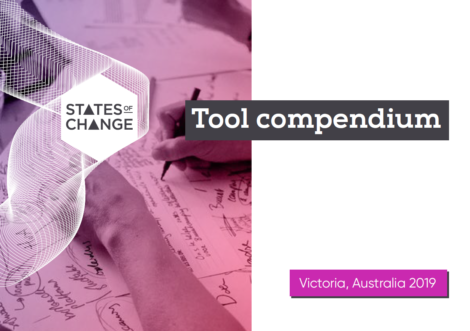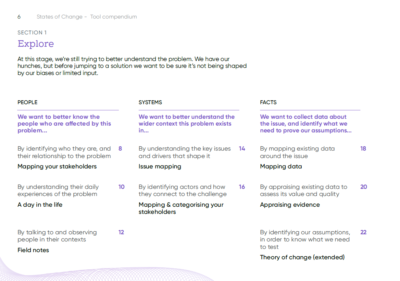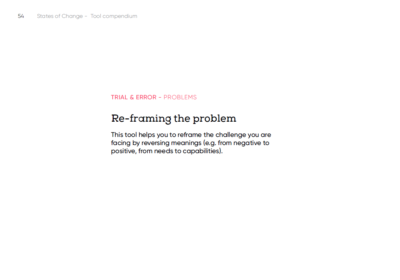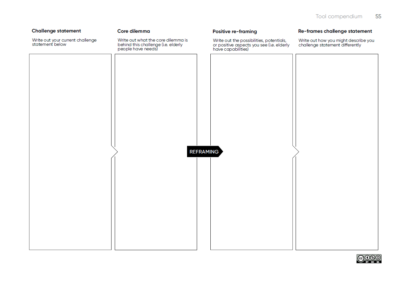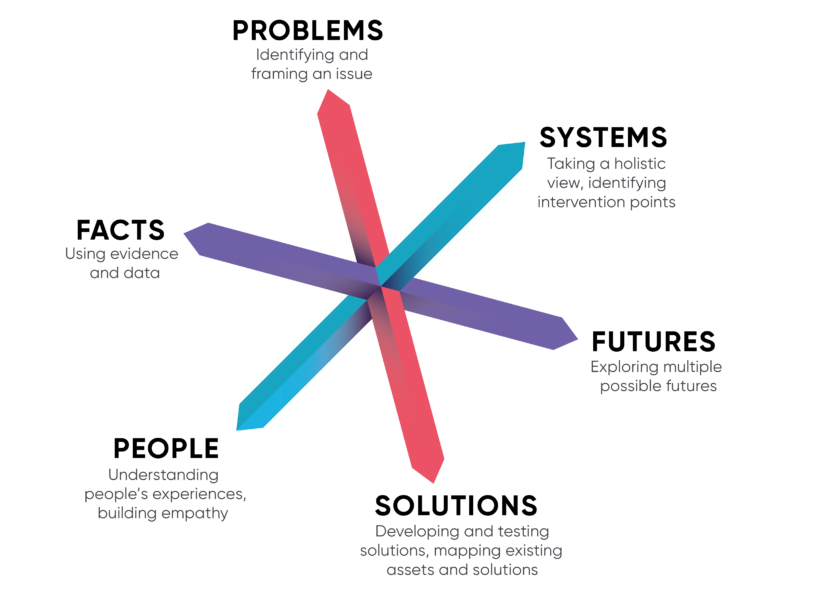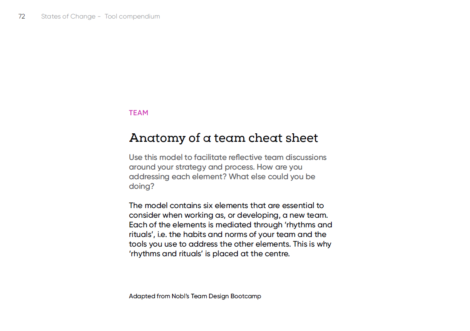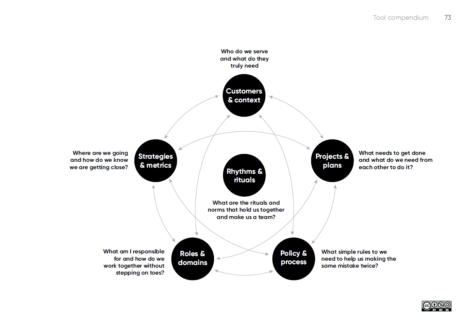In this blog, we share a collection of tools that we've been using with teams in our learning programme in Victoria, Australia.
Since March last year, we’ve been running our learning programme in Australia with 43 civil servants in partnership with the Victorian State Government, Australia. The programme takes places over nine months and includes intensive face-to-face training weeks where teams are introduced to multiple new ideas, concepts, methods and mental models.
We know that having the proverbial kitchen sink thrown at you can be overwhelming and cognitively exhausting, therefore we use many tools (most often worksheets) to facilitate this learning. And once we’d completed the face-to-face training weeks and the States of Change team had left, teams were tasked with practically applying their newly developed skills to the challenge project they had brought to the programme.
When we asked how we could continue to help them in doing so, a frequent request was for further support in understanding how to identify which tool to use when, and for what purpose.
What we ended up creating is the Tool Compendium: an interactive PDF containing a selection of the key tools we used during the sessions within the Victoria programme. It is divided into two sections:
- the first is ‘tools for experimental problem solving’ and aligns with both our Experimental Continuum and Six Principles for exploring the unobvious.
- the second is ‘tools for setting the conditions’, which looks beyond the project challenge to other factors that can impede innovation if not addressed simultaneously, e.g. team dynamics, communication and environment.
Not another toolkit!!?
We are well aware of the ‘peak toolkit’ concerns in the public sector innovation arena, and are reluctant to needlessly add to this. The reason we’re releasing it is that we’re curious about whether the navigation structure resonates with others who are also tackling challenges that require multiple different methods and approaches - rather than focusing on just one.
We can’t stress enough that the content of this resource was created specifically for the Victorian cohort. During the face-to-face sessions, the group were introduced in practice to each of the models and frameworks included in this compendium. Therefore, we do not assume that the compendium will be immediately useable or even applicable to someone viewing it for the first time.
Instead, this was an attempt at supporting a specific group in embedding actions into practice by providing them with a quick ‘cheat sheet’ of possible use cases. We also hoped it would act as a reminder that when tackling complex challenges, you have to move between multiple areas of focus:
- Zooming in and out between individual people and complete systems, which not only helps to understand problems from multiple perspectives and levels, but also where and how your intervention creates an impact.
- Toggling between the facts (that is existing evidence and data), whilst being imaginative and exploring multiple possible futures. It’s important to build ideas from a strong evidence base, without allowing them to restrict your understanding of what’s possible.
- The problem and solution are inextricably linked - acting on either one affects the other. Switching between the two helps to better understand the nature of the challenge and the suitability of your intervention.
How we use tools in the learning programme
To build innovation capacity and begin to change how public sector organisations tackle problems, the States of Change public innovation programmes champion a ‘learning by doing’ approach.
This involves teams working on real life challenges that relate to their jobs throughout the life of the programme. And with the guidance of experienced innovation practitioners, these challenges become the vehicles through which teams test out and rehearse new ways of working, thereby developing their innovation skills.
One of the key phases in the States of Change learning programme is the ‘Fundamentals’. Taking place over a period of several weeks to a few months, it essentially contains the fundamental ‘building blocks’ of taking an experimental problem solving approach.
This ‘Fundamentals’ phase includes three week-long workshops, each based on a stage of the Experimental Continuum (namely: explore, trial and error, and validate). It is during these face-to-face sessions that we use tools to help teams get their heads around the new ideas, concepts, methods and mental models. Tools support us in thinking, discussing and acting in a different way, in order to get a job done. They help:
- Focus the conversation
- Develop a shared language or understanding around a certain concept/topic
- Visualise (and make tangible) systems or processes, in order to sense make of them and/ or pinpoint leverage points
- Reflect on our actions and outcomes, using nuanced questions
- Generate ideas, through prompts which change how we approach a challenge
How to use this compendium
Section 1. Tools for experimental problem solving
Section 1 of the compendium is divided by the three stages in the Experimental Continuum (Explore, Trial & Error, Validate), and at each stage you’ll find tools connected to the Six Principles for innovation (People & Systems, Facts & Futures, Problems & Solutions).
Section 2. Tools for ‘Setting the conditions’
The second section works slightly differently, and is divided into three parts where the tools don’t relate to the projects or the phases. It looks more at the areas they are trying to improve, i.e. how to work better as a team, how to share ideas and communicate differently.
Knowing when to use what is half the battle, and we want to support people in recognising the type of tool they need. They can then explore further what else is available in terms of other ethnographic research tools, systems tools, futures tools etc.
As described above, we think of tools as essential to help us think, discuss and act in a different way. Yes, there are a sea of tools available, but where to find them, how to use them, when to use them, in what order, and for what challenge, changes almost every time.
Ultimately, we believe in moving away from prescribed toolkits and into the business of adapting and creating your own tools. Tools that best suit the needs and abilities of the unique audiences you’re working with, tools that hone in on the specific issues, tools that better align with your ways of working.
This won’t happen overnight, but the more tools you’re exposed to and apply, the better you’ll understand their format, characteristics, flow, as well as the outcomes they produce.
Let us know your thoughts
We’re sharing the Compendium for a few different reasons.
Firstly, we’re interested in whether it makes sense to others, especially those who are seeing it for the first time. Is it useful to you? Why and why not?
Secondly, we’re interested in hearing about any other ways people have captured and organised learning and tools as a way to remember and encourage applicability - in particular, any ways that don’t make it “just another toolkit”!
And finally, we’re curious as to whether others find the volume of tools and toolkits difficult to navigate. We tend to see that toolkits focus on one method (i.e. future scoping) in isolation, whereas in reality using any method is dependant on other factors. With the compendium, and the learning programme itself, we try to show how different approaches are needed at different times. So does there need to be a clearer understanding on the interplay and value of multiple methods when dealing with challenges?

